Ddabong House (따봉하우스)
2.2 Km 54 2021-03-27
73, Kyungheedae-ro 4-gil, Dongdaemun-gu, Seoul
+82-2-962-2885
This store specializes in instant tteokbokki. This restaurant's signature menu is stir-fried rice cake. This Korean dishes restaurant is located in Dongdaemun-gu, Seoul.
BENIKEA Hotel Flower (베니키아호텔 플라워)
2.2 Km 19961 2021-05-01
269, Wangsan-ro, Dongdaemun-gu, Seoul
+82-2-962-8251
Located approximately 500 meters from Cheongnyangni Station, Benikea Hotel Flower is a great choice for visitors traveling by train. Although the guestrooms are relatively small, they are well equipped with convenient amenities and furnishings. Some rooms even have a computer and a large TV. The hotel is located near significant tourist attractions such as Jongno, Gyeongbokgung Palace, Insa-dong and Cheonggyecheon Stream.
Uireung Royal Tomb [UNESCO World Heritage] (서울 의릉(경종, 선의왕후) [유네스코 세계문화유산])
2.2 Km 23222 2021-06-03
146-20, Hwarang-ro 32-gil, Seongbuk-gu, Seoul
+82-2-964-0579
Uireung is the royal tomb of King Gyeongjong (reign 1720-1724), the 20th ruler of the Joseon dynasty, and his second wife, Queen Seonui.
King Gyeongjong was the first son of King Sukjong and Janghuibin, who was one of King Sukjong’s concubines. King Gyeongjong, who was born weak and anemic, died four years after becoming the king, without any great political achievements. Uireung tombs differ from the other royal double tombs in that they are not placed side-by-side. Instead, according to geomantic theory, one tomb has been placed directly behind the other one. The arrangement also shows that when making tombs, Korean ancestors did their best to protect the natural environment. Another feature of Uireung Royal Tomb is the stone fence raised using twelve stone posts. Each post has a letter inscribed, representing one of the twelve sibijisin gods.
Hyeseong Kalguksu (혜성칼국수)
2.2 Km 87 2021-03-30
247-1, Wangsan-ro, Dongdaemun-gu, Seoul
+82-2-967-6918
It serves Kalguksu (chopped noodle soup), or kneaded noodles, with a 50-year tradition. The best menu at this restaurant is noodle soup with chicken. This Korean dishes restaurant is located in Dongdaemun-gu, Seoul.
Chowoo Maeul (초우마을)
2.3 Km 8380 2019-01-29
8, Hoegi-ro 28-gil, Dongdaemun-gu, Seoul
82-2-957-2266
Chowoo Maeul, located at Hwigyeong-dong Intersection, specializes in fresh beef, serving top-quality top sirloin and boneless short ribs. It has banquet rooms for group dining.
Olive Young - Hoegi Station Jungang Branch [Tax Refund Shop] (올리브영 회기역중앙)
2.3 Km 0 2024-04-18
185-1, Hoegi-ro, Dongdaemun-gu, Seoul
-
Seoul Yangnyeongsi Market (서울 약령시장)
2.3 Km 49201 2021-06-09
10, Yangnyeongjungang-ro, Dongdaemun-gu, Seoul
+82-2-969-4793
"Yangnyeongsi," which literally means medicine city district, refers to a central Oriental medicine district formed near major cities where medicinal herbs are collected and produced. Yangneongsi were first established by royal order during the Joseon dynasty for the purpose of effective production, distribution and management of medicinal products and herbs.
Seoul Yangnyeongsi Market history is relatively short, having formed naturally in the mid-1960s by medicinal herb merchants who gathered here seeking to sell their products with the city bus terminal and Cheongnyangni Station as their central base. Originally, these merchants came to Seoul through the old Seongdong Station and Chyeongnyangni Station after the Korean War, seeking to sell medicinal herbs and vegetation products that were cultivated and collected in the Gyeonggi-do and Gwangwon-do regions. This small market that was once open on an empty plot of land was later authorized as an official market establishment. Road and railroad developments between Gangwon-do and Seoul were followed and by the 1970s, the market grew into what is now seen today. The name Seoul Yangnyeongsi Market was given by the Seoul mayor in 1995.
Olive Young - Jeongneung Branch [Tax Refund Shop] (올리브영 정릉)
2.3 Km 0 2024-04-17
38, Bogungmun-ro, Seongbuk-gu, Seoul
-
Gomiso Gopchang (고미소곱창)
2.3 Km 8 2021-03-19
228, Wangsan-ro, Dongdaemun-gu, Seoul
+82-2-969-8883
Gopchang (intestine) is a Korean popular dish with stir-fried pig intestines and vegetables. The most famous menu is grilled beef small intestine/grilled pork small intestine. A barbecue specialty restaurant located near Cheongnyangni Station in Seoul.
Seoul Gyeongdong Market (서울 경동시장)
2.3 Km 56565 2020-05-07
147, Wangsan-ro, Dongdaemun-gu, Seoul
+82-2-967-8721
As the nation began to recover from the aftermath of the Korean War, farmers from the northern Gyeonggi-do region and Ganwon-do gathered around the old Seongdong Station (renamed ‘Hansol Donguibogam’) to sell their produce and wares. The farmers’ impromptu gathering on the fallow farmland to make their transactions soon led to the birth of a new marketplace.
Gyeongdong Market is located around Jegi-dong, Yongdu-dong and Jeonnong-dong at Dongdaemun-gu and consists of the Gyeongdong Oriental Medicine Market, the Gyeongdong New Market, the Gyeongdong Old Market, the Gyeongdong Building, Hansol Donguibogam, and more.
Currently, renovations are underway to reinvent the out-dated market environment into an updated shopping experience that still preserves the area’s innate charm. In 2004, Hansol Donguibogam was built and opened on the spot where the Midopa Department Store used to stand. Hanbang Cheonha, Donguibogam Tower-Tel and other areas are now undergoing renovations.
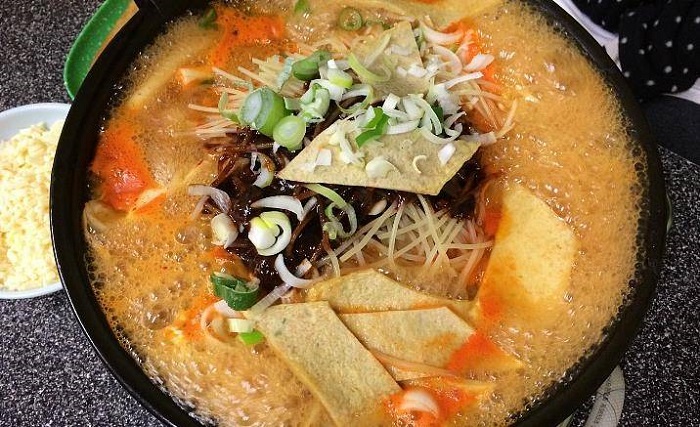

![Uireung Royal Tomb [UNESCO World Heritage] (서울 의릉(경종, 선의왕후) [유네스코 세계문화유산])](http://tong.visitkorea.or.kr/cms/resource/80/2690680_image2_1.jpg)
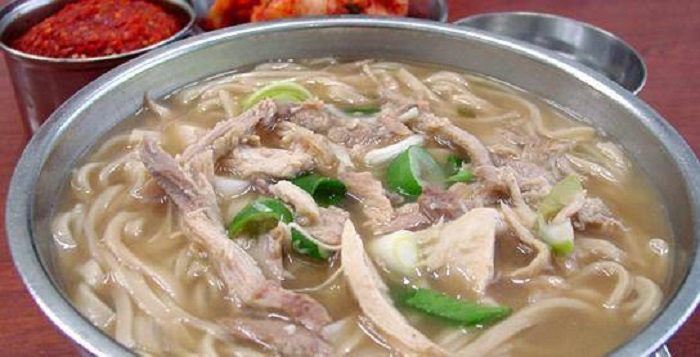
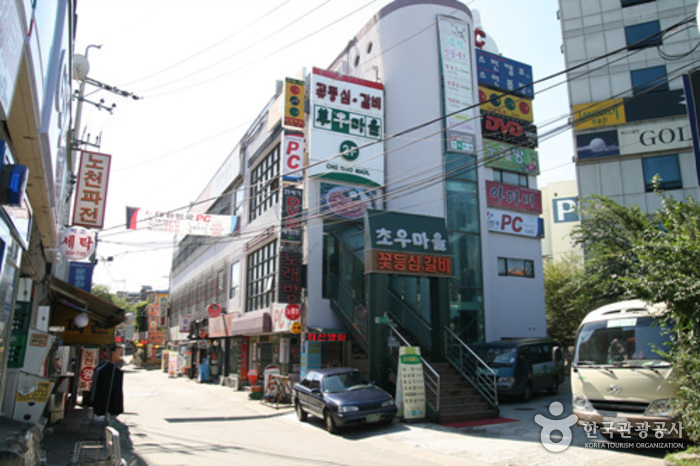
![Olive Young - Hoegi Station Jungang Branch [Tax Refund Shop] (올리브영 회기역중앙)](http://tong.visitkorea.or.kr/cms/resource/59/2889359_image2_1.jpg)
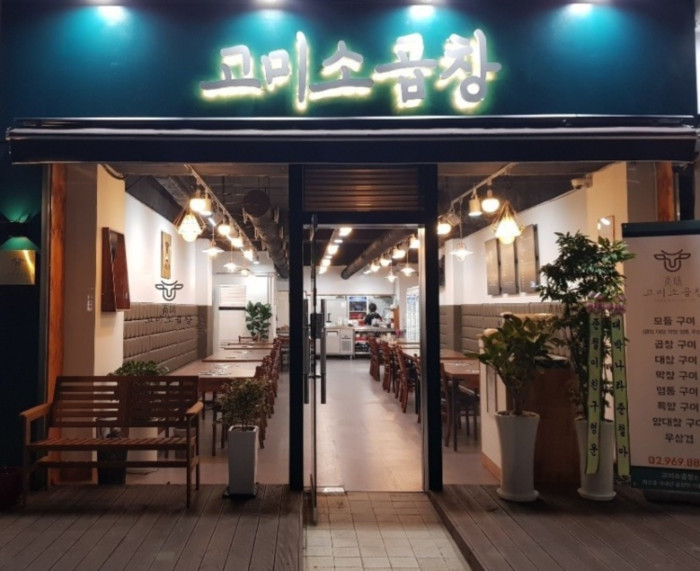
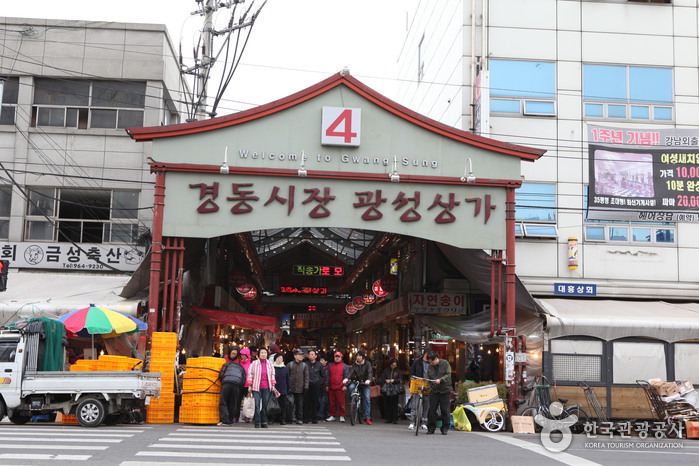
 English
English
 한국어
한국어 日本語
日本語 中文(简体)
中文(简体) Deutsch
Deutsch Français
Français Español
Español Русский
Русский